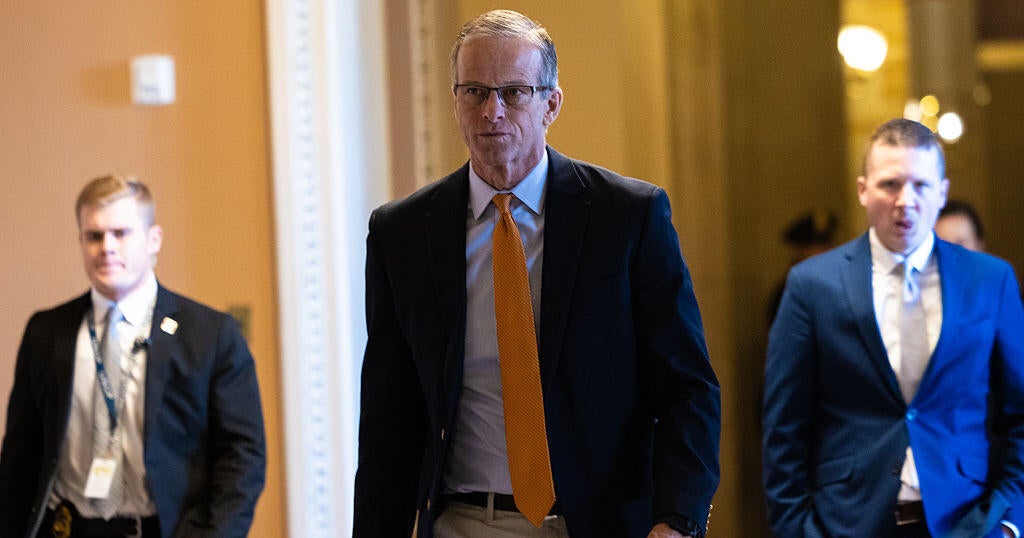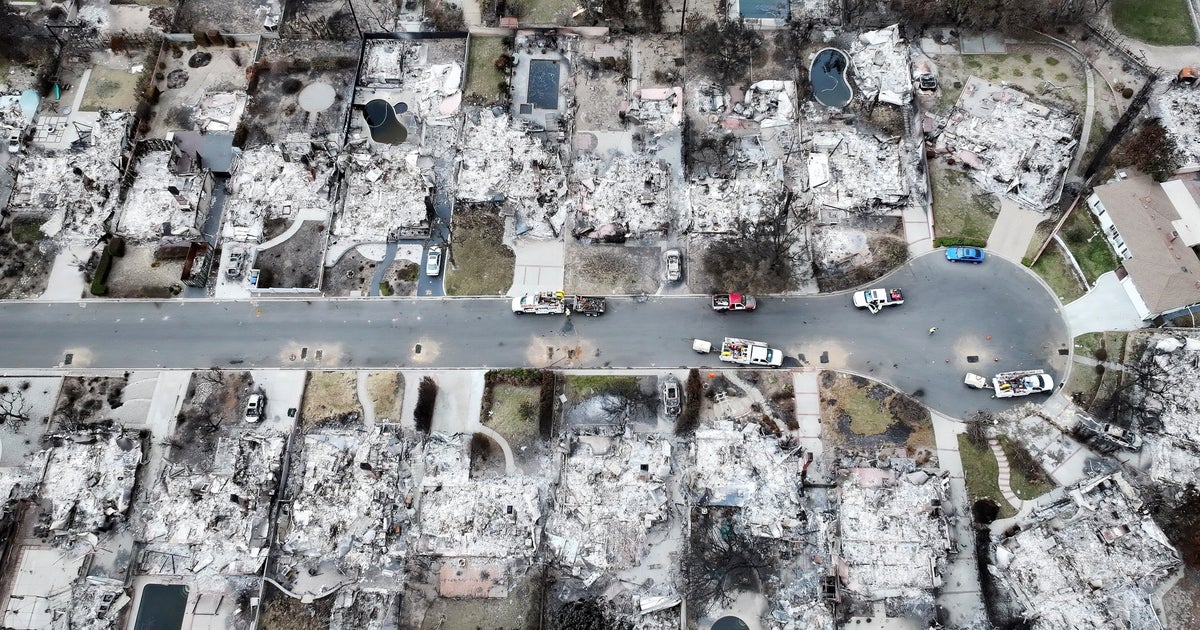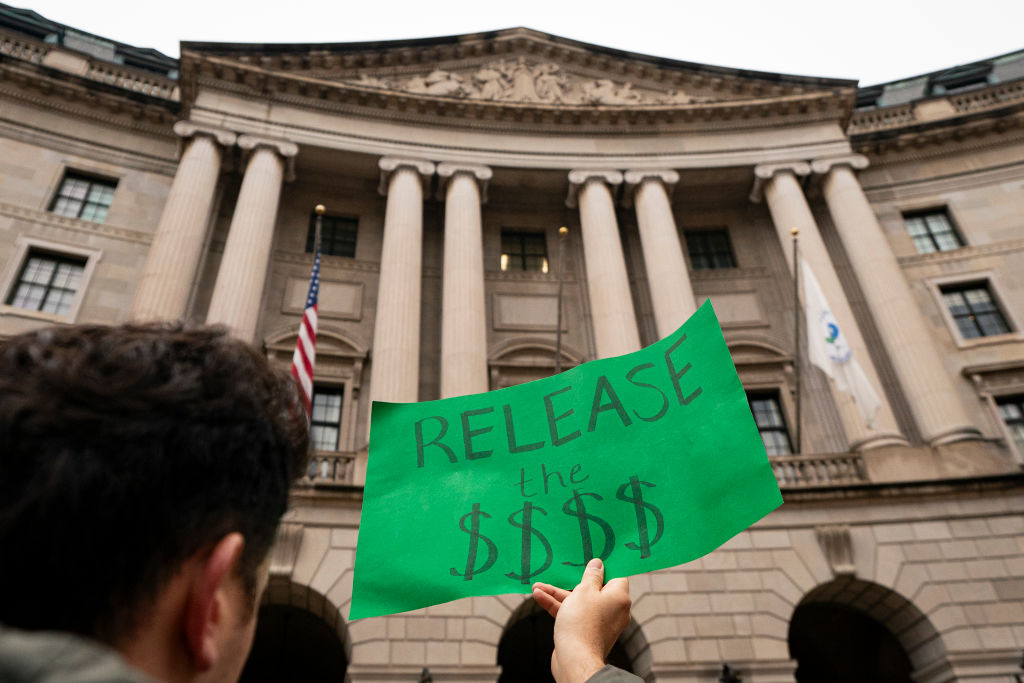Supreme Court allows EPA to temporarily enforce limits on greenhouse gas emissions from coal-fired power plants
Washington — The Supreme Court on Wednesday allowed the Environmental Protection Agency to enforce its most stringent restrictions on greenhouse gas emissions from coal-fired power plants while legal challenges play out.
The court rejected requests for emergency relief filed by more than two dozen states and the energy industry, which asked it to halt the measure that was rolled out by the EPA in May and took effect in July. Justice Clarence Thomas said he would grant the applications, and Justice Samuel Alito did not participate in the consideration of the requests.
In a brief statement, Justice Brett Kavanaugh, joined by Justice Neil Gorsuch, wrote that since the challengers don't have to begin compliance work until June, they are unlikely to suffer irreparable harm before the federal appeals court in Washington, D.C., decides the merits of the case.
Kavanaugh wrote that he believes the states and energy groups "have shown a strong likelihood of success on the merits as to at least some of their challenges to the Environmental Protection Agency's rule," and said the party that loses before the lower court could again seek relief from the Supreme Court.
Background of the case
The case arose from a May rule that regulates emissions from existing and new fossil fuel-fired power plants. The measure is similar to the Clean Power Plan from 2015, which capped carbon dioxide emissions based on generation-shifting measures, which the EPA identified as a "best system of emission reduction" under a provision of the Clean Air Act. The Supreme Court in June 2022 found that the EPA did not have the authority to implement such a regulatory scheme.
Under the new measure, the EPA chose carbon capture as the best system of emission reduction for existing coal plants operating beyond 2038. The rule requires facilities that intend to stay open after 2039 to capture 90% of the carbon dioxide emitted by their plants by 2032. The EPA's rule also sets standards for facilities that plan to close before 2039. Coal-fired plants retiring by 2032 are exempt.
The technology involves the use of chemical solvents to remove 90% of the carbon dioxide from a plant's exhaust stream. The captured carbon dioxide is then transported by pipeline and permanently stored underground.
The limits are part of the Biden administration's efforts to curtail air pollution that has been warming the planet and driving climate change. Fossil fuel-fired power plants are the nation's largest stationary source of greenhouse gas emissions, according to the EPA. President Biden pledged early in his administration that the U.S. would eliminate carbon pollution from the energy sector by 2035, and from the economy by 2050.
The same day the agency published the rule, a group of 25 states asked the U.S. Court of Appeals for the District of Columbia Circuit to review it.
Two other states, as well as energy cooperatives and trade associations, brought their own challenges, arguing it is an unlawful exercise of the EPA's authority and an attempt to restructure the power industry.
The D.C. Circuit rejected numerous requests to halt the EPA's power plant rule in July, finding that the challengers didn't satisfy the requirements for its intervention at that stage. The three-judge panel said in its order that the EPA has claimed only the authority to set emissions under a provision of the Clean Air Act "based on the application of measures that would reduce pollution by causing the regulated source to operate more cleanly," which falls within its jurisdiction.
The states and industry groups then took their bid to the Supreme Court, which was confronted with at least eight different requests for emergency relief, all arising from the D.C. Circuit's order.
In one filing, the 25 states, led by West Virginia and Indiana, accused the EPA of implementing a rule that aimed to push coal and gas plants offline.
The new requirements, they said, are "problematic, setting impossible-to-meet standards for regulated facilities, stripping away the states' discretion to patch up the damage, and ultimately pushing regulated sources into early retirements."
"The rule will impose serious, irreversible harms on states, producers, consumers, and others involved in our nation's critical power industry," the states wrote. "It forces producers to decide between launching a Hail Mary bid to squeak by under a painful new regime or just bowing out of the game entirely."
They cited studies conducted in 2022 by and for power plants in South Dakota, Wyoming and Texas that found that it would cost each plant $500 million to install carbon capture and storage, or CCS.
"This expense could double energy prices," officials for the 25 states wrote in their request for the Supreme Court's intervention.
In addition to the expenses related to the carbon-capture process, the states said the EPA's predictions for building and deploying the emission-control technology, as well as cost estimates for laying pipeline to transport the extracted carbon, are "Pollyannaish."
"It's no surprise that EPA admits that the rule works only if liberally lubricated with federal subsidies from the Inflation Reduction Act and Infrastructure Investment and Jobs Act," the states said, referring to two key massive pieces of legislation enacted during the Biden administration.
The states said the EPA lacked authorization to impose its rule on power plants under the so-called major questions doctrine, which holds that Congress must give clear authorization for an agency to decide an issue of major economic or political significance.
But the Justice Department said the EPA relied on "hundreds of pages of scientific and technical analysis" to conclude that the carbon-capture system has been "adequately demonstrated," and the standards of performance based on the technology are "achievable." The administration also pushed back on the challengers' characterization of carbon capture as "untested" and "futuristic," noting that the technology was patented nearly a century ago and has been used in a number of industrial applications.
Solicitor General Elizabeth Prelogar argued that decisions about the rate of capture required by the rule, 90%, and feasibility of developing carbon capture facilities by 2032 are best left to the experts at the EPA and not second-guessed by the courts.
She also warned that delaying the rule's deadlines while the courts review its legality would harm the government and the public.
"Climate change is the nation's most pressing environmental challenge," Prelogar wrote in a filing, adding that the new requirements make a "meaningful contribution" to addressing high levels of greenhouse gasses emitted by power plants.
She continued: "Applicants state that they would need to capture a 'massive amount of CO2' to comply with the rule, but that is another way of saying that applicants will emit a 'massive amount of CO2' if the rule's requirements do not take effect."
In a string of recent decisions, the Supreme Court has curtailed efforts by the EPA to keep the nation's air and water clean. In June, the high court blocked the agency's so-called "good neighbor" plan, which aims to curb air pollution and address harmful smog.
Last year, it curtailed the EPA's authority to regulate certain wetlands under the Clean Water Act. In June 2022, the high court found Congress didn't grant the EPA the authority under the Clean Air Act to set emissions caps based on the generation-shifting approach taken through the Clean Power Plan rule.
But in recent weeks the Supreme Court has been asked to intervene in early stages of cases challenging new EPA rules and opted not to do so. Earlier this month, it declined to pause a new measure that set more stringent standards on emissions of mercury and other toxic metals from coal-fired power plants, and allowed the Biden administration to continue enforcing a regulation that aims to curb emissions of the greenhouse gas methane from new and existing oil and gas facilities.





